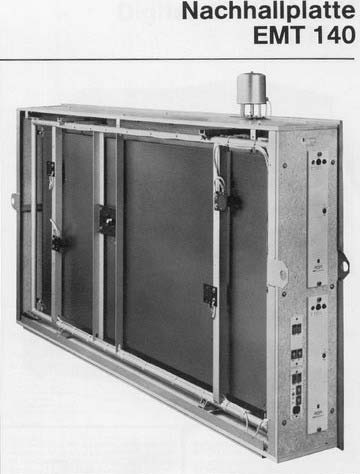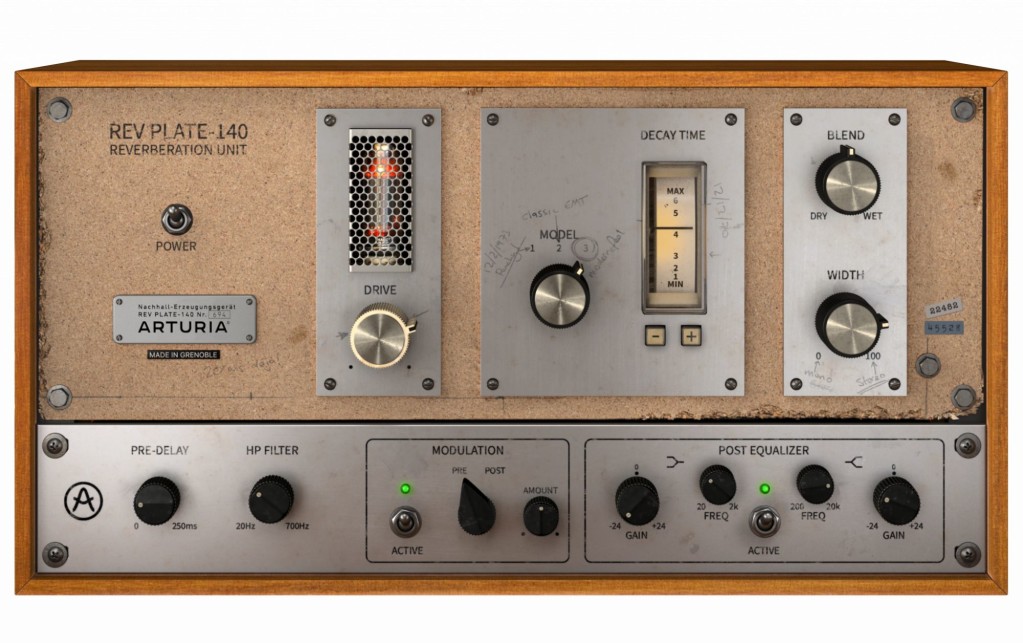I’m dreaming of a reverberant Christmas / with EMT plates I used to know / where my yule log’s combustible / and pre-delays now adjustable / to tweak plug-ins in the snow…
Uh, yes, as if it weren’t enough that Native Instruments has a giveaway on their new Raum plug-in, Arturia this week also announced they’re giving away the new REV Plate-140 if you download by Christmas day (December 25). And while I put some hard-working DSP developers at risk by saying this, the combination of these two plug-ins covers a whole lot of bases in reverb generally.

Let’s talk about this plate, because the EMT 140 is sought-after in production because it is fairly magical. The original is a late 1950s/1960s West German invention that was a hallmark in studio production, as it has a specific, lush “gloss” it adds to everything from vocals to percussion to (nowadays) stuff like synths, too. It’s very possible you already have a model of it or an impulse file for it (for instance, there are 140 impulses in the convolution reverb in Ableton Live). But even if you do, adding another model could be worthwhile – there are a lot of variations of this, and Arturia has added some of their own, very useful, twists.
The democratic power of computation seems a very good thing in this case. The original cost as much as a house and weighed around the same as four people, fascinating engineering as it was. Now it’s some free software. And that’s good, because the studio system – well, let’s just say Phil Spector was not the nicest man, bless his heart.
Incidentally, “plate reverb” really does mean a physical, metal plate – the vintage plate reverb is genuinely not only an “analog” invention but an electro-acoustic, physical device.
Arturia’s version looks promising. (I just downloaded it.) They’ve modeled a vacuum tube preamp, so this is best thought of as the original EMT. There’s now a high pass filter to apply before the reverb processing, which is essential so that you don’t make too much low-end mud in your mix.
And the Arturia approach here as in a lot of their instruments tends to be a software hybrid approach – not slavishly recreating the old gear, but combining accurate models of portions of its sound with new features. The new features could be what drive you to add another EMT to your rig – and for those new to this device, they mean you can simply treat it as a modern sound design tool rather than worrying about records people made decade ago.
So in this case, that means:
- An adjustable predelay, which is useful for creating space in the mix (along with that highpass filter for frequency space)
- Integrated chorus, which is just, well, cool and useful (I waxed poetic about Ableton having added this to their reverb since the start)
- Post-reverb EQ, so you can shape the results right in the mix (again, something in Ableton’s often-overlooked default reverb)
- Modulation

Plus you get three different EMT models to play around with, and that vacuum preamp, as well as the necessary time, stereo width, and blend controls. This is 99 bucks after Christmas, so now is the time to go grab it.
There’s an advantage to this being a free plug-in. If you get all your friends and collaborators to grab it right now, you have a plug-in you can use on tracks you’re sharing. Because it runs in AU, AAX, and VST, you can run it more or less elsewhere (well, except natively on Linux, but – let’s push developers on that in 2020). And because the EQ and chorus are built-in, you can store those settings as your own presets, too (which is harder if you combine multiple plug-ins).
You know the deal: go to the website, login, head to the download page to indicate you want this, then open Arturia Software Center and it should appear. If you’re new to Arturia’s stuff, yes, this requires free registration and downloading another tool. But ASC these days is reliable, so fear not.
https://www.arturia.com/reverb-gift
Then there’s an extensive video tutorial, but – I like to read the manual.
Oh yeah, and this vintage plate reverb is very different from the delay network approach of the NI plug-in I wrote up yesterday – but both have tools to tame the results in your mix. Taking some time with the two over the holidays would be a good exercise for newcomers and advanced users alike.
Because, I mean, I don’t know which holidays you intend to celebrate, but for me some cozy times with reverbs and the people I love pretty much equal happiness.
And speaking of great ways to pass the time in winter (or summer, southern hemisphere folks who are now at the beach), this is one of a number of fascinating histories of the EMT and plate reverb (plus its successor, the digital EMT 250) :
EMT is no more, but it’s one of the many audio companies to call Berlin home; see the history of Elektro-Mess-Technik. That’ll be 1930s Berlin, though, so let’s not talk about it too much.
Also this week: